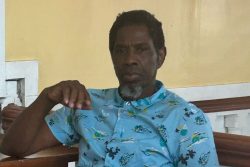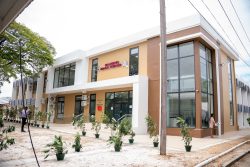On Saturday, the police force announced the arrest of six persons over the killing of a security guard at the Lusignan Golf Club, among them a stepson of the deceased. Days earlier another four or five were detained over the gruesome murders of a mother and her son at Rose Hall, several relatives included. Neither case has thus far yielded a charge but they underline, particularly, but not exclusively, the anomie that has gripped the rural areas and hinterland all across the country. Dozens of these cases have occurred in recent years but they have failed to attract a structural response that inquires deeply into those communities and the breakdowns they are experiencing.
Invariably the suspects or the perpetrators of these crimes are persons who are enmeshed in the social deterioration that marks the land. Persons who have lost hope, have little to no formal education, are unemployed or barely in employment, in the clutches of dysfunctional families and domestic violence, under the spell of drugs and/or alcohol abuse, at the mercy of rapacious mining or the drug trade, victims of sexual abuse, recidivists – these are the categories who are overrepresented as accused and convicts in these matters. Over the years, the police have assigned the description of `disorderly murders’ to killings that have occurred where persons under the influence or inebriated – mostly in or near rum shops – engage in deadly violence and these occur with great regularity.
As has been stated before, with the hundreds of social sciences graduates from the University of Guyana and other tertiary institutions annually one would have thought that there would have been tomes of research completed and ongoing into the social deformations in the communities across the country to inform policymakers and those who seek power so that remedies could be attempted even in trial and error. No such luck there.
It is often a subject of comment that visits to rural communities and even in the wards of the city at any time of the day find youth and the not so young liming at street corners, at loose ends or waiting for the corner bar to open. These persons either have no interest in employment, are disillusioned or are being looked after by relatives here or abroad. Another telling fact which is reflective of the education system is that a large number of these persons are poorly educated. They might have had primary education and perhaps some exposure to secondary school but little else. Their ability to navigate their future is therefore limited and predisposes them to the maladies around them. Free education is not what it is boasted to be. There are many gaps and failures.
So what is to be done? There is no trickle down solution to any of these problems. They require engineering from the ground up where communities and the governance tiers that they are in charge of begin making impactful decisions. There can be no politician who has held any post of significance in the last 40 years who would profess to be unaware of the social deterioration in communities across the country that has fuelled crime, the breakdown of law and order and apathetical behaviour of all kinds including rampant and unrelenting noise abuse.
Several years ago, the community of Baramita in the north west was one of those said to be in disintegration from the depredations of mining, alcohol, drug abuse and misogyny. Several ministerial delegations were dispatched to prescribe various solutions. Being remote from the centre, it is not easy to discern what is happening there but has its social ills seen any remediation or is it still in the same way? Are there any lessons that can be transcribed and grafted elsewhere? Which of the ministries have taken the lead role and can provide answers: Amerindian Affairs, Local Government or Human Services?
In the oil state that we now have fortuitously become, when those in government speak and are heard of, it appears that there is no awareness at all of the social calamities that beset communities like Lusignan, Rose Hall or Johanna on a regular basis. Their language is intended to sound visionary and sweeping. Guyana is a on a march to greatness and nothing must stand in its way even if our petroleum industry compounds climate change problems and puts us at risk of environmental disaster. The monumental infrastructural changes are played up to the hilt. Nothing is wrong with that as it is intended to spark robust growth in opportunities and economic empowerment for all. But what about the human infrastructure? What is their state and would they be in a position to benefit from all of these gleaming additions to the landscape? Or are these behemoths that will dot Guyana’s intended future at risk of a replay of Shelley’s Ozymandias?
While there is no doubt that the strife faced in communities near and far have their origins in the ethno-political upheavals of the 60s, the years of rigged elections under Burnham and the economic decay and migration that followed and continues, it’s those in charge now who have the mandate of trying to redress the anomie that glowers across the land. The PPP/C has been in office for 26 of the last 31 years, surely it must take responsibility for what is occurring and be seized with the obligation to take it on frontally and enlist the opposition.








